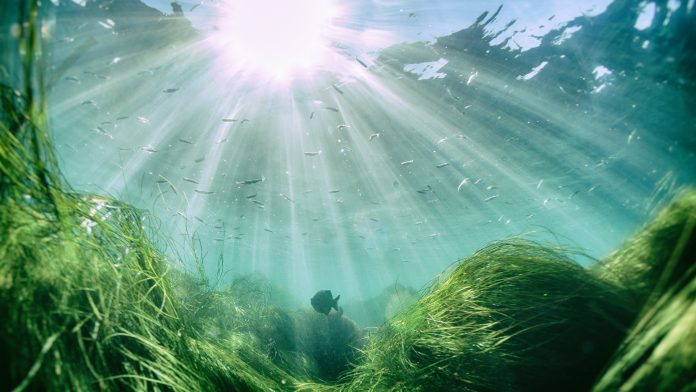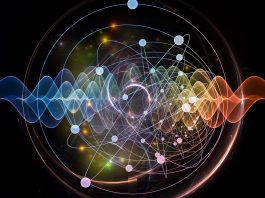Plants that live on land grow by using sunlight to perform photosynthesis. How, then, do algae photosynthesise in the deep sea, where only tiny amounts of light reach these plants?
A team of researchers led by Associate Professor Ritsuko Fujii, from the Research Center for Artificial Photosynthesis (ReCAP) at Osaka Metropolitan University, and graduate student Soichiro Seki, from the Graduate School of Science at Osaka City University, aimed to fill this gap in knowledge.
They used cryogenic electron microscopy to investigate the structures and binding environments of pigments bound to the photosynthetic antenna of C. fragile. The results allow for the elucidation of the molecular mechanism by which blue-green light—the only light available in deep seawater—is efficiently utilised for photosynthesis.
The results of the study were published in the journal BBA Advances.
How land and deep sea plants perform differently
Land plants mainly absorb red and blue light from the sun and use it for photosynthesis. However, only weak blue-green light reaches the ocean floor. Therefore, macroalgae growing in the ocean have developed a protein, a so-called photosynthetic antenna, that efficiently utilises this blue-green light.
The photosynthetic antenna of marine macroalgae is very similar to that of land plants, but differs in the structure of the pigments bound to it. Land plants have two types of pigments bound to their photosynthetic antennae, namely carotenoids and chlorophylls.
In the marine green macroalga Codium fragile, the major carotenoids are substituted with siphonaxanthin while some chlorophyll a molecules are replaced by chlorophyll b molecules.
Siphonaxanthin and chlorophyll b are known to contribute to increased absorption of green light and blue-green light, respectively, but how this contributes to photosynthesis has not yet been fully understood.
What did the research show?
High-resolution analysis by cryogenic electron microscopy showed that siphonaxanthin (SCP) in C. fragile is greatly distorted and forms hydrogen bonds with the surrounding protein at two locations. This structural feature is deemed a key factor in siphonaxanthin’s ability to absorb green light.
SCP has a trimeric structure, wherein each monomer containing two lutein and two chlorophyll a molecules in the plant-type LHCII are replaced by siphonaxanthin and its ester and two chlorophyll b molecules, respectively.
Additionally, the researchers successfully detected the difference between chlorophyll a and chlorophyll b, and they clarified several chlorophyll molecule substitution sites. When the substitution occurs, the adjacent region of chlorophyll b clusters becomes wider, enabling better absorption of blue-green light.
In other words, the team was able to obtain information on the pigment coordinates, contributing to a better understanding of the mechanism of more efficient photosynthesis.
“I think increasing the utilisation of photosynthesis simply by changing the pigment structure would be a cost-effective strategy,” concluded Professor Fujii.
“Learning such survival strategies of organisms would lead to improved use of sunlight and the development of renewable energy sources for human beings.”





